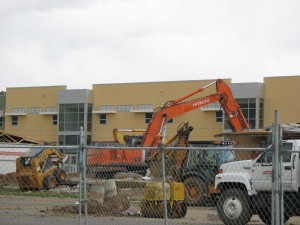K-12 Facilities Retrofit Funding
Photo by teoflio/Flickr
Excerpts from a facilitiesnet.com 6-part series on K-12 retrofits:
Components and systems within school districts are often outdated and require the maintenance and operations directors challenges in projects that deliver both long-term performance and bottom-line benefits.
“There is almost no project that we don’t scale back based on financial limitations,” says Bob Wilkinson, director of maintenance and operations with Frederick County (Md.) Public Schools. “I don’t mean that to be pessimistic. It’s just a realistic response to the prioritization of needs.”
Managers in K-12 districts across the country are forced to weigh similar issues every day as they consider the best ways to take advantage of funding.
“Financing can be a substantial hurdle to overcome,” says Jennifer DuPlessis, director of maintenance and operations with the Arlington (Texas) Independent School District, which consists of 75 buildings and 10 million square feet on 1,400 acres and serves 64,000 students and 8,000 staff and faculty. “Our administration and board have been very supportive of our efforts to improve school facilities. But just like every other school district, we have financial constraints.
In some districts, the lack of available funding and a large stock of aging facilities and equipment has resulted in growing deferred maintenance and has paralyzed a school district’s efforts to carry out upgrade projects.
“Our requested capital improvement projects list submitted annually is based upon projected funding,” says Craig Borkman, a project manager with the Virginia Beach (Va.) City Public Schools district, which is made up of 96 buildings with 11 million square feet and serves 68,000 students and 10,000 faculty and staff. “These projects are typically reviewed, prioritized and further validated for completion. In the event funding is not available, the project is typically pushed back another year. As our infrastructure continues to age, the list of deferred projects generally becomes larger. We’ve shifted from building new facilities to replacing aging systems in the ones we have that we can no longer afford to replace.”
What are the next retrofit projects at your school?
Manager roles, expected return on investment, the time constraints are other topics the 6-part series cover and something we will highlight in another blog post. Stay tuned!
